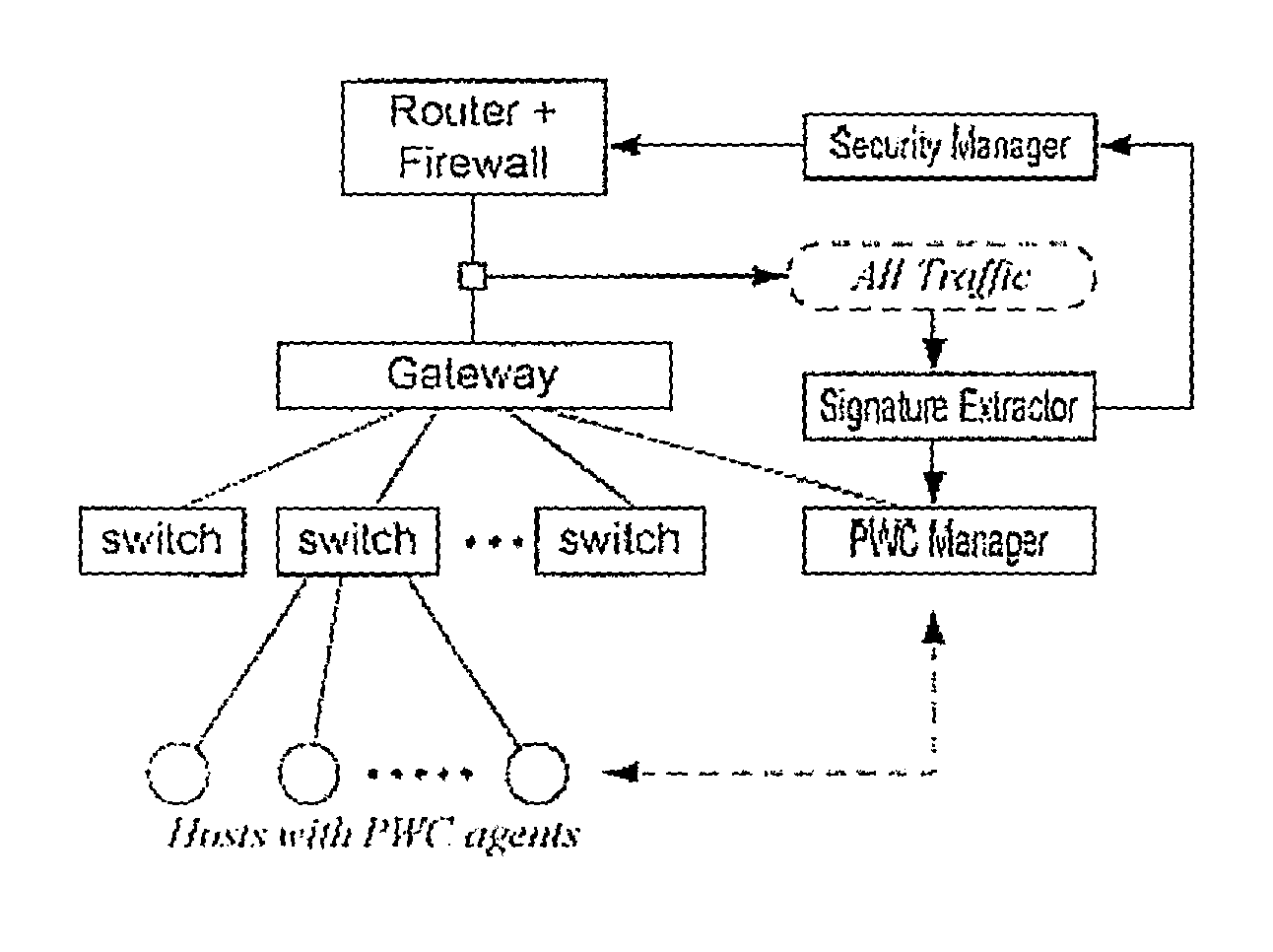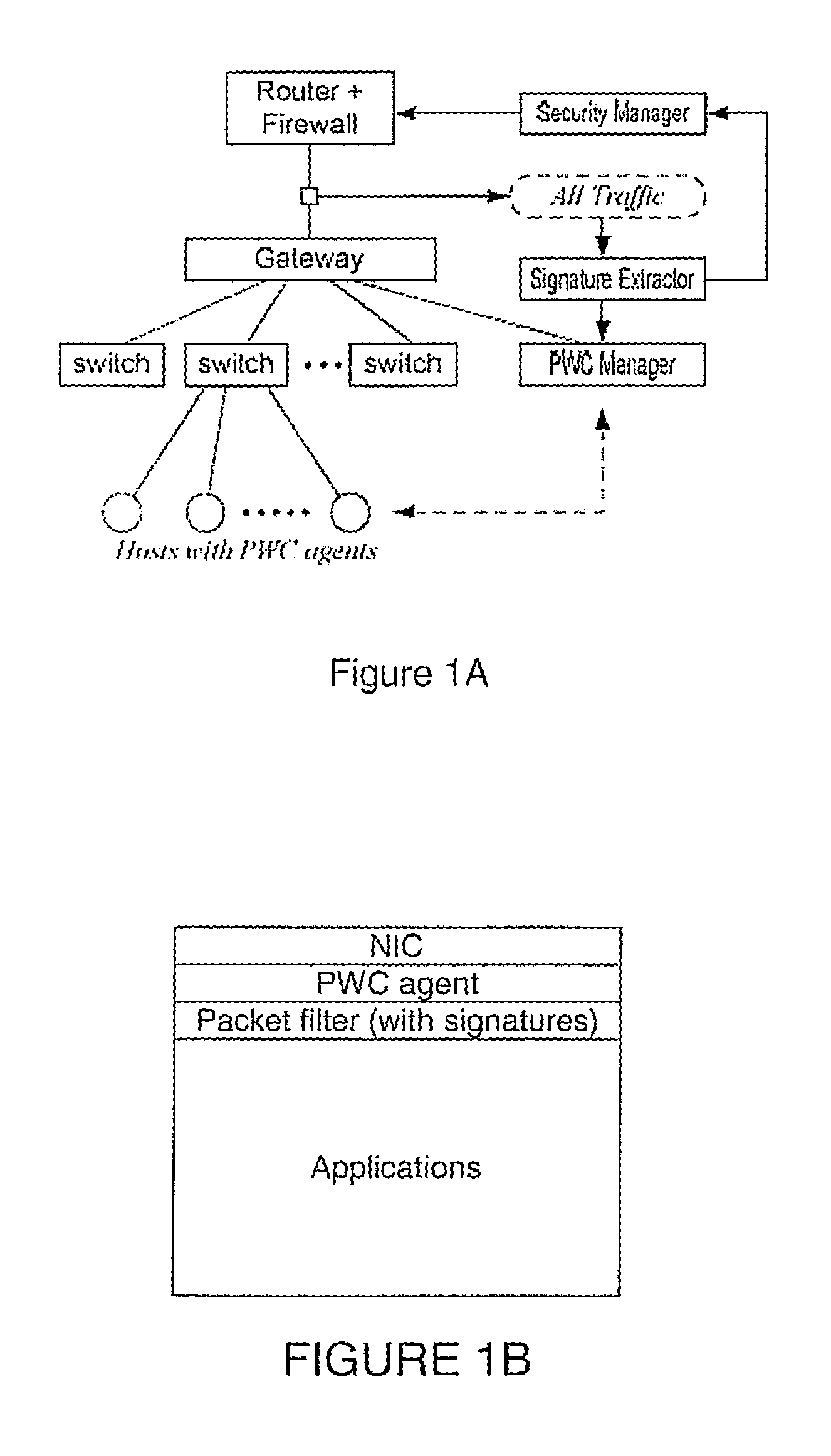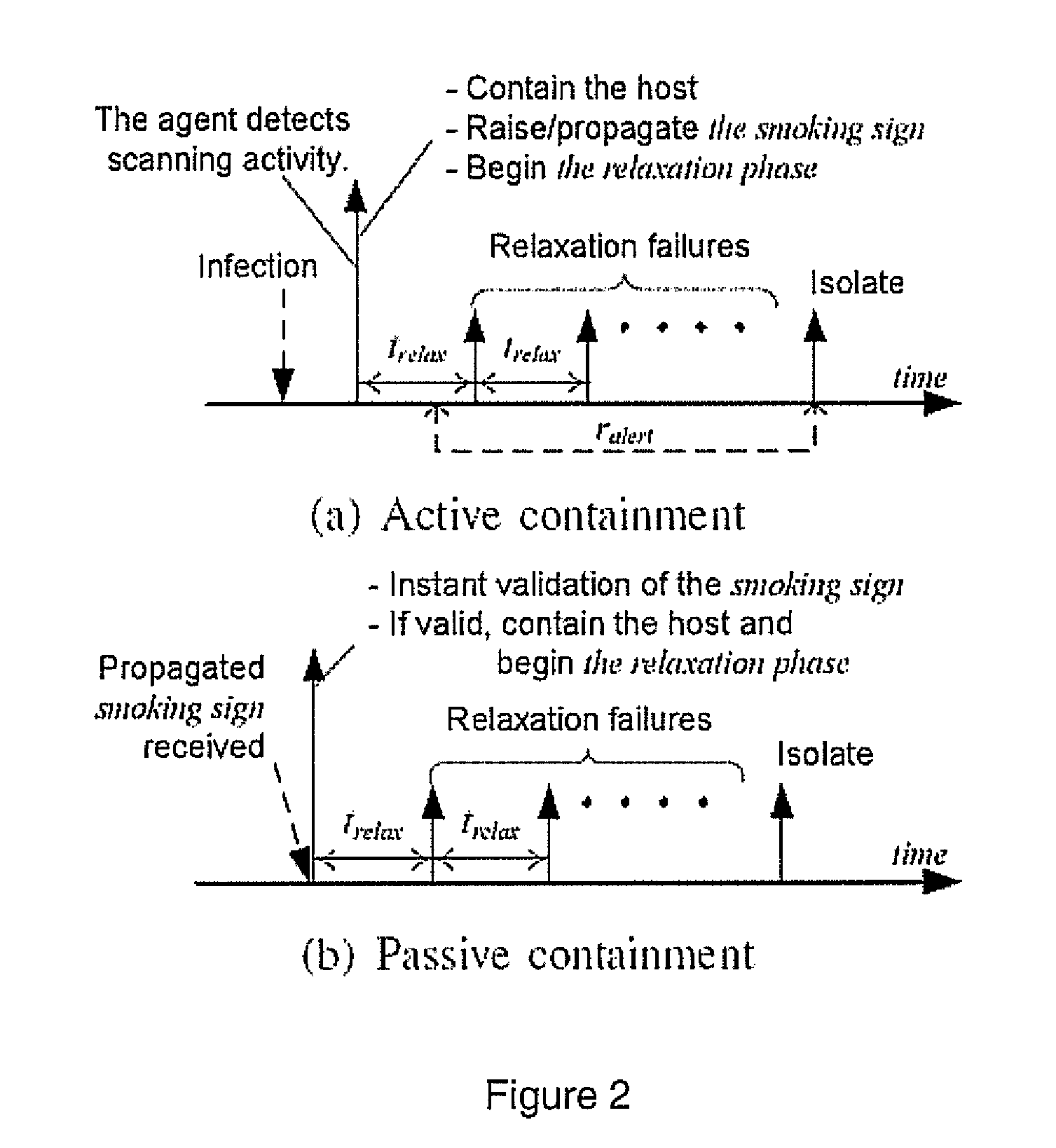Proactive worm containment (PWC) for enterprise networks
a technology of enterprise networks and worms, applied in the field of detection and removal of malicious computer code, can solve the problems of introducing longer delays for normal traffic, affecting the timeliness of normal traffic, and existing defenses are still quite limited, so as to achieve the effect of better timeliness
- Summary
- Abstract
- Description
- Claims
- Application Information
AI Technical Summary
Benefits of technology
Problems solved by technology
Method used
Image
Examples
Embodiment Construction
A. Definitions
[0034]Target Worm. We consider UDP / TCP-based scanning worms including bandwidth-limited worms like the Slammer to be the target of PWC. We also take local preferential scanning and hit-list scanning worms into consideration. However, PWC is not designed against slow, stealthy worms that scan, for example, a few destinations per minute.
[0035]Worm Scan. For convenience of presentation, worm scans are classified into three types: L-L scans from an internal(local) infectee to an internal address, L-R scans from an internal infectee to an external (remote) address, and R-L scans from an external infectee to an internal address.
[0036]Connection Attempts and Successful Connections. In PWC, the containment and the relaxation are mainly triggered by the analysis on outbound TCP SYN and UDP packets. Hereafter, we mean outbound SYN and UDP packets when we mention outbound connection attempts. In addition, we mean outbound SYN-ACK and inbound UDP packets by mentioning successful i...
PUM
 Login to View More
Login to View More Abstract
Description
Claims
Application Information
 Login to View More
Login to View More - R&D
- Intellectual Property
- Life Sciences
- Materials
- Tech Scout
- Unparalleled Data Quality
- Higher Quality Content
- 60% Fewer Hallucinations
Browse by: Latest US Patents, China's latest patents, Technical Efficacy Thesaurus, Application Domain, Technology Topic, Popular Technical Reports.
© 2025 PatSnap. All rights reserved.Legal|Privacy policy|Modern Slavery Act Transparency Statement|Sitemap|About US| Contact US: help@patsnap.com



